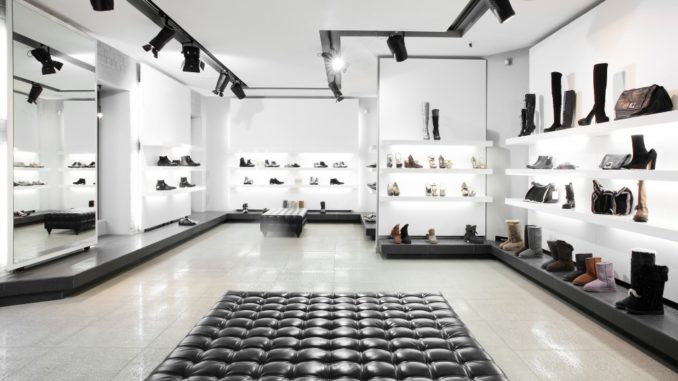
Retail lighting isn’t just about providing ambiance or even light. When it comes to commercial lighting, it can actually make or break a customer’s in-store experience. Many experts from companies like AMPRO explain that the type of lighting installed in a retail shop can positively influence customer behavior and mood. A well-designed lighting environment can persuade people to make purchases and keep coming back for more, whereas a poorly lit retail store can discourage spending and turn prospective clients away.
Lighting design can affect customer behavior, types of light bulbs and lighting types available, and the best practices to adopt in any commercial establishment.
The Significance of Lighting Design
- Influences buying behavior. Dim, warm lighting can relax customers enough so that they drop their guard and buy items impulsively for pleasure as opposed to utility. This type of lighting is most often used in luxury retail outlets. Meanwhile, bright and cool lighting provides high visibility, which means customers will be more discerning about their purchases — this is useful for stores that sell electronics.
- Provides comfort. Appropriate lighting can make a retail space feel comfortable and inviting. This encourages them to spend more time and more money while browsing the store.
- Communicates brand image. Certain lighting choices can improve your brand image and shape the customer’s perception of your brand. For example, warm and dramatic lighting conveys a sense of luxury and glamour, whereas cooler, brighter lighting imparts a feeling of youthfulness and vitality.
- Highlights inventory. Directional and accent lighting can control what you would like to highlight for your customer’s line of vision. If there are certain products you want to accentuate and push forward, then your lighting choices can certainly be manipulated to reflect that.
Types of Light Bulbs
- Fluorescent. Fluorescent light bulbs have excellent energy-saving capabilities, and they last much longer than most bulb types. They often give off a cool, harsh light that may not be suitable for all retail environments.
- Halogen. Halogen light bulbs emit a soft, widespread glow. They’re often considered an eco-friendly option since they consume less energy. However, they’re slightly more expensive than standard light bulbs, and they don’t last very long.
- LED. Light-emitting diode bulbs (LEDs) are multipurpose bulbs that feature energy-saving properties as well as an impressive array of lighting colors and shades. These types of bulbs are long-lasting and are capable of reaching extremely high levels of brightness. They’re slightly more expensive than most bulbs, but their energy-saving capabilities and durability make them worth the extra cost.
- Incandescent. Incandescent light bulbs are relatively cheap and are excellent at radiating a cozy, warm light. The only drawback to these types of bulbs is that they have a very short life cycle and need to be changed often. They’re also not very energy-efficient.
Types of Lighting Set-Ups

- General Lighting. General lighting is also known as ambient lighting and is used to illuminate the entire retail space. The level of brightness and shade of general lighting you need depends on the kind of store you have, but in general, the purpose of this type of lighting is to make the store easy to navigate.
- Accent Lighting. Accent lighting is used to emphasize certain areas or products. This kind of lighting provides customers with a sense that a particular product is important, notable, and unique. This can be used to highlight artworks, jewelry, sale items, or seasonal displays.
- Task Lighting. Task lighting is found in areas where you expect customers to execute certain tasks. For example, changing rooms, checkout counters, and store signage. These can be added after all the other types of lighting have been installed since this is when you can clearly see which areas you want to emphasize.
- Decorative Lighting. Decorative lighting is used merely for cosmetic purposes. It can inject a bit of personality and fun into an otherwise boring space. Examples of this lighting include wall signs, string lights, and hanging fixtures.
Lighting Design
- Be flexible. Always be open to change and growth when it comes to your lighting design. Explore different types of lighting set-ups and don’t be afraid to experiment every once in a while.
- Consider how the lighting design matches your brand. When coming up with your lighting design scheme, always think about how your retail store’s lighting matches your brand image. If you’re catering to more high-end, wealthy customers, you might want to dim your lighting and focus on accent lights to highlight certain products. Likewise, if your brand image is youthful and hip, you can incorporate quirky decorative lighting touches to showcase your brand’s personality.
- Hire a professional. Lighting designers know how to make good use of lighting strategies to transform your retail space and bring it to the next level.
- Be mindful of materials and textures. Glossy paint can reflect light and cause distracting reflections on your store walls. It’s important to be mindful of the kind of textures and materials you have in your store so as not to undermine the benefits of good lighting design.
The importance of thoughtful lighting design is very apparent. If you have your own retail store, keep this helpful guide in mind when designing your store’s interiors to maximize the many advantages of strategic lighting design.
